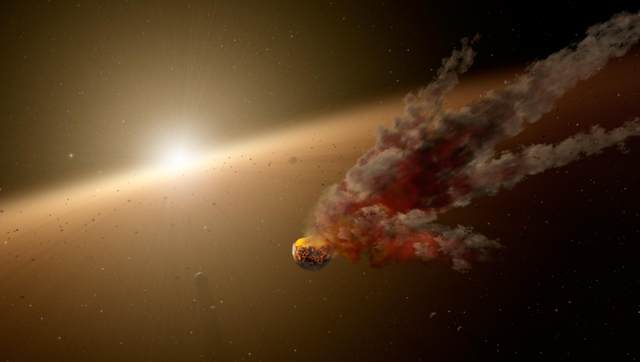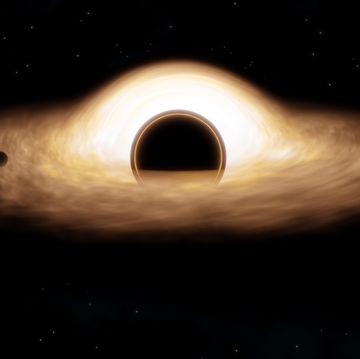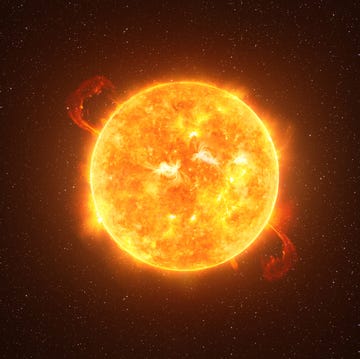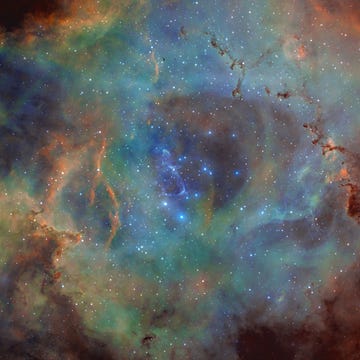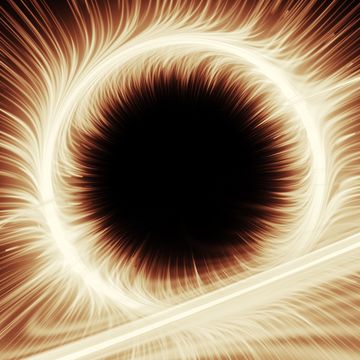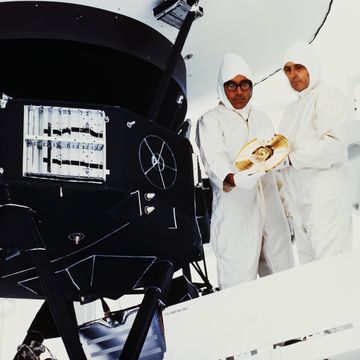Yet another theory has been developed to explain the mysteries of Tabby's Star, one much more plausible than previous, eccentric theories of an "alien megastructure." A new study from NASA and Belgian AstroLAB IRIS observatory suggests that the star's odd behavior could be explained by an "uneven dust cloud."
This is not the most exciting explanation of the famous-in-astronomy-circles Tabby's Star, also known as KIC 8462852. It's been observed in the night sky since 1890, but in September 2015, Dr. Tabetha Boyajian, then of Yale and now of Louisiana State, published a paper titled "Where's the Flux?" which looked at 846's highly unusual light curve. Tabby's Star, as it became known, would experience a series of eccentric photometric "dips," which would dim its light with seemingly no pattern.
Theories erupted about what could be causing the dips. The most outlandish of these was that Tabby's Star was, or at least was involved in, the creation of an alien superstructure. But there have been other, more plausible theories. A planet with uneven, wobbly rings near the star could also potentially generate a similar effect.
Continued study, however, has shown less dimming in the infrared light coming from Tabby's Star than in its ultraviolet light.
"This pretty much rules out the alien megastructure theory, as that could not explain the wavelength-dependent dimming," says Huan Meng, at the University of Arizona, Tucson, who is lead author of the new study looking at the dust theory published in The Astrophysical Journal, in a press statement. "We suspect, instead, there is a cloud of dust orbiting the star with a roughly 700-day orbital period."
From January to December of last year, researchers looked extensively at the light from Tabby's Star in ultraviolet, infrared, and visible. Based on dips in ultraviolet light, they determined that tiny particles were blocking the star's light. Dust near a star, known as circumstellar dust, hits the Goldilocks test for what could be causing continued dimming. It's not so fine that it would fly away from the star, but not thick enough to uniformly cover everything.
NASA compares the experience to going "to the beach on a bright, sunny day and sitting under an umbrella." While the umbrella will block some of the sunlight, it won't be able to stop the sunset from changing colors. The light changes through the scattering of particles, and Tabby's Star might experience a similar process from our vantage point. "The new study suggests," NASA says, "the objects causing the long-period dimming of Tabby's Star can be no more than a few micrometers in diameter (about one ten-thousandth of an inch)."
While NASA appears to be quite confident in the larger dust theory, there are still smaller mysteries within, like a three-day period earlier this year of continued short-term dimming. It's had to move its telescopes off the star for now, but it's clear that Tabby's Star will remain an object of curiosity in the sky.
"Tabby's Star could have something like a solar activity cycle," says Siegfried Vanaverbeke, an AstroLAB volunteer who helped convince the Belgian lab to make it a point of study. "This is something that needs further investigation and will continue to interest scientists for many years to come."
Source: NASA
David Grossman is a staff writer for PopularMechanics.com. He's previously written for The Verge, Rolling Stone, The New Republic and several other publications. He's based out of Brooklyn.
